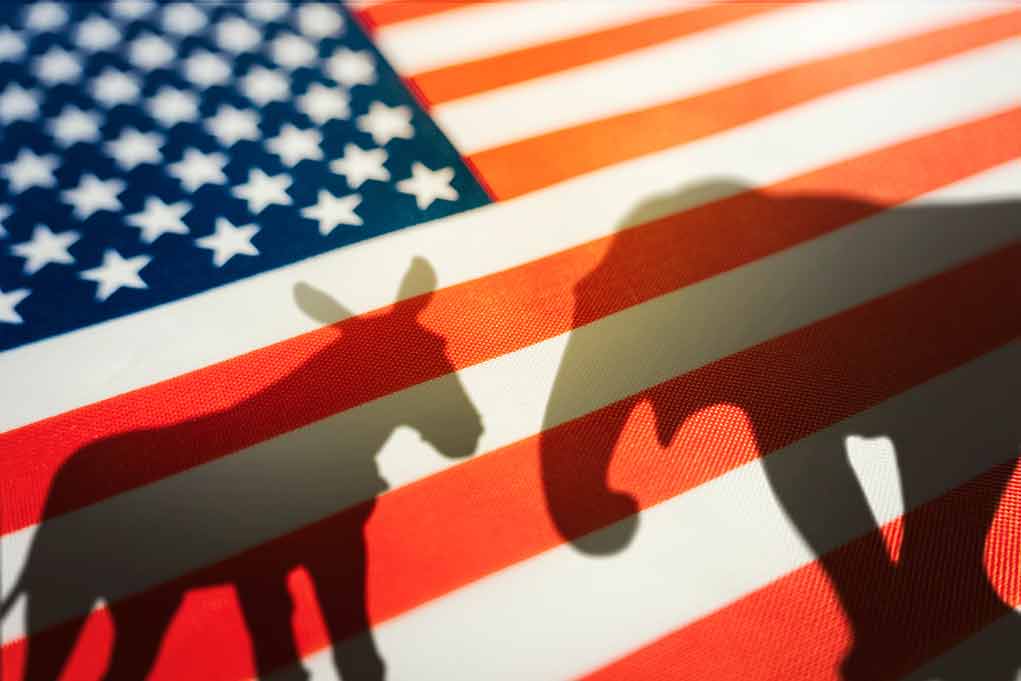
Democrats face a historic crisis of confidence as new polls reveal the party’s popularity has plummeted to the lowest levels ever recorded, with only 27% of registered voters holding positive views.
Key Takeaways
- The Democratic Party’s popularity has reached an all-time low of 27% according to NBC News polling, the worst rating since tracking began in 1990.
- Confidence in Democratic congressional leadership has fallen to just 25%, down from 34% in 2023, according to a Gallup poll.
- Democratic voters have shifted dramatically from favoring compromise (59% in 2017) to preferring their party stand firm against Trump (65% currently).
- The party has experienced a shocking 41-point decrease in confidence among their own party members since last year.
- Republicans now enjoy higher congressional leadership confidence ratings (39%) than Democrats for the first time in years.
Historic Collapse in Democratic Party Support
The Democratic Party is experiencing an unprecedented crisis in public confidence according to multiple national polls. NBC News polling reveals only 27% of registered voters now hold positive views of the party – its lowest rating since tracking began more than three decades ago. Meanwhile, an overwhelming 55% of voters hold negative views, with 38% reporting “very negative” opinions. The collapse in support comes after Democrats lost control of both the White House and Senate in the 2024 elections, leaving the party searching for direction.
This dramatic decline extends to independent voters, a crucial voting bloc for any party hoping to win national elections. Among independents, a mere 11% hold positive views of the Democratic Party, signaling serious challenges ahead as the party looks toward the 2026 midterms. Despite these troubling numbers, congressional preference remains surprisingly competitive, with 48% of voters favoring Democrats versus 47% for Republicans.
Confidence in Congressional Democrats hits all time low in new poll https://t.co/SInkRNAkqn
— Fox News (@FoxNews) April 18, 2025
Democratic Voters Shift Away From Compromise
One of the most striking developments is the dramatic shift in how Democratic voters view compromise with President Donald Trump. In 2017, during Trump’s first term, a strong majority (59%) of Democrats favored working with the president to find common ground. Today, that sentiment has completely reversed, with 65% now preferring their party stand firm on Democratic positions, even if it leads to congressional gridlock. This hardening of positions reflects growing frustration among the Democratic base with their party’s perceived ineffectiveness in opposing Trump’s agenda.
Many Democratic voters express concerns that compromising with Trump could harm democratic institutions, while others acknowledge some level of cooperation might be necessary to achieve legislative goals. This internal tension creates a difficult balancing act for party leaders already struggling to maintain unity after electoral defeats. The shift toward confrontation rather than cooperation marks a significant change in the party’s approach to governance.
Unprecedented Collapse in Party Confidence
The Gallup poll reveals even more troubling news for Democrats, showing confidence in the party’s congressional leadership has crashed to an all-time low of 25%, far below their previous low of 34% recorded just last year. This represents a staggering 41-point decrease in confidence among their own party members since 2023 – an almost unprecedented collapse in internal support. By contrast, Republican congressional leadership now enjoys a 39% confidence rating, significantly higher than their previous low of 24% in 2014.
“With these numbers, the Democratic Party is not in need of a rebrand. It needs to be rebooted,” said Democratic pollster Jeff Horwitt.
Democratic frustration appears centered on perceptions that party leaders have been insufficiently vocal or effective in opposing President Trump’s agenda. Since returning to the White House, Trump has moved aggressively to reshape the federal government and reverse many Democratic policy priorities. Some Democratic representatives have openly criticized their party’s leadership approach, with Rep. Ro Khanna stating Democrats “need to take on his arguments and offer a counter to defeat them.” This internal criticism highlights growing divisions within the party about strategy and messaging.
The Path Forward
With multiple national polls by Quinnipiac University, CNN, and NBC News all showing similar declines in Democratic Party favorability, party leaders face difficult choices about how to rebuild public confidence. The combination of electoral defeats and internal divisions has left the party at a crossroads, with the 2026 midterm elections already looming. Democrats must decide whether to adopt a more confrontational approach toward the Trump administration or seek areas of potential compromise to demonstrate governing effectiveness.
The party’s challenges extend beyond their relationship with Trump. Republicans have made significant inroads among traditional Democratic voting constituencies, including working-class voters, Hispanic Americans, and younger males. Rebuilding these crucial support bases while developing a compelling alternative vision to the current administration represents perhaps the most significant challenge Democrats have faced in a generation. Whether party leadership can successfully navigate this difficult political environment remains to be seen.















